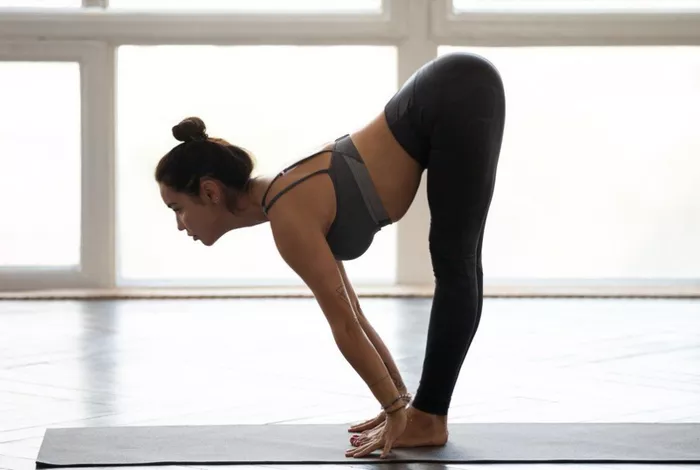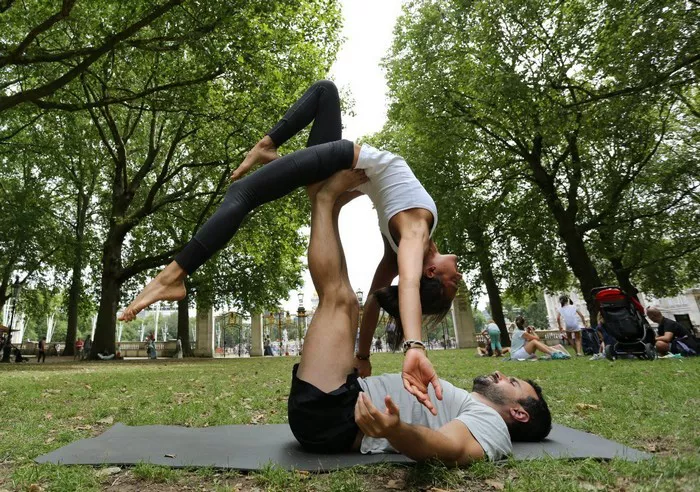Yoga is widely known for its benefits in flexibility, relaxation, and mental clarity. However, many people underestimate its power as a form of strength training. Certain yoga styles emphasize building muscular endurance, enhancing core stability, and improving overall body strength. This article explores the nine best yoga styles that can effectively contribute to strength training, providing detailed insights into their unique benefits and practical applications.
1. Ashtanga Yoga: Dynamic Strength and Endurance
Ashtanga yoga is a vigorous and dynamic form of yoga that focuses heavily on strength and stamina. Practiced in a series of predetermined sequences, Ashtanga incorporates powerful, flowing movements synchronized with breath control. Each pose demands considerable muscular engagement, particularly in the core, arms, and legs. Practitioners develop enhanced muscular endurance through repetitive movement patterns, making it an excellent choice for strength training.
The continuous flow from one posture to the next also improves cardiovascular fitness, which complements muscular strength. Additionally, Ashtanga’s emphasis on holding challenging poses such as arm balances and inversions builds upper body strength effectively. This style requires discipline and commitment but rewards practitioners with significant gains in muscular power and resilience.
2. Power Yoga: High-Intensity Strength Building
Power yoga is a modern adaptation of traditional yoga practices, designed specifically to build strength and increase fitness levels. It combines fast-paced sequences with bodyweight exercises that target major muscle groups. Unlike slower, meditative styles, power yoga focuses on maintaining intensity throughout the session, promoting muscle growth and fat loss simultaneously.
Because power yoga often includes plank variations, chaturangas, and lunges, it serves as a comprehensive strength workout. It also integrates balance and flexibility elements, making it an all-around fitness regimen. Suitable for those seeking a high-intensity practice, power yoga bridges the gap between yoga and conventional strength training programs.
3. Iyengar Yoga: Precision and Muscular Control
Iyengar yoga stands out for its emphasis on alignment and precision, using props such as blocks, straps, and chairs to facilitate correct posture. While it is not as fast-paced as Ashtanga or power yoga, Iyengar demands muscular control and endurance. Holding poses for longer durations helps develop isometric strength in key muscle groups, especially the core and legs.
This style’s meticulous approach ensures that every muscle engaged in a pose is activated appropriately, reducing injury risk and maximizing strength gains. It is especially beneficial for individuals recovering from injuries or those looking to build foundational strength through controlled movements. The focus on detail promotes body awareness, enhancing functional strength useful in daily activities and other fitness routines.
4. Vinyasa Yoga: Flowing Strength and Flexibility
Vinyasa yoga, often referred to as “flow yoga,” connects breath with continuous movement through a sequence of postures. The dynamic transitions require strength to maintain balance and control throughout the practice. Vinyasa’s flowing nature engages multiple muscle groups simultaneously, promoting full-body strength development.
Strength training benefits come from repeated weight-bearing postures like planks, warrior poses, and arm balances. These sequences increase muscular endurance while improving cardiovascular health. Vinyasa yoga is adaptable to all fitness levels, and its versatility allows practitioners to focus on strength, flexibility, or both, depending on class intensity and style.
5. Bikram Yoga: Heat and Strength Conditioning
Bikram yoga consists of a set series of 26 postures practiced in a heated room, typically around 40°C (104°F). The heat increases muscle elasticity, allowing for deeper stretches and more effective strength building. This style combines isometric holds and dynamic movements to develop strength and endurance under challenging conditions.
The intense heat environment encourages sweating and detoxification, which aids recovery. Postures such as standing poses, balances, and core-strengthening exercises form the backbone of the practice. Bikram yoga is especially suited for those who thrive in high-pressure environments and seek a rigorous strength training complement through yoga.
6. Anusara Yoga: Strength Through Heart-Centered Alignment
Anusara yoga focuses on alignment principles paired with a positive, heart-centered philosophy. This style integrates strength training with a mindful approach, emphasizing muscle engagement to support safe and sustainable postures. The practice encourages holding poses that require balance and stability, enhancing muscular endurance and core strength.
Anusara’s alignment cues ensure muscles are used efficiently, preventing strain and improving overall body mechanics. It is particularly effective for individuals who want to develop functional strength while maintaining a strong mind-body connection. The combination of strength and mindfulness supports holistic fitness and well-being.
7. Kundalini Yoga: Strength in Breath and Movement
Kundalini yoga incorporates physical postures, breathwork (pranayama), and dynamic movements aimed at awakening energy centers in the body. While not traditionally associated with muscular strength, Kundalini’s repetitive kriyas and breath-controlled exercises contribute significantly to core stability and muscular endurance.
Strength gains emerge from sustained engagement of muscles during sequences involving spinal flexions, twists, and controlled breathing techniques. The mental discipline cultivated through Kundalini practice also enhances focus and stamina, which indirectly supports strength training goals. This style is ideal for those seeking a blend of physical and energetic empowerment.
8. Hatha Yoga: Balanced Strength and Flexibility
Hatha yoga is the foundation of many modern yoga practices, emphasizing a balance between strength, flexibility, and relaxation. While it is generally slower-paced, Hatha includes poses that require significant muscular engagement, particularly when held for extended periods.
Practitioners develop strength through static holds such as plank, chair pose, and warrior series. Hatha yoga is accessible for beginners and provides a solid introduction to strength-building through bodyweight exercises. Its holistic approach ensures strength gains without compromising flexibility, making it a balanced choice for comprehensive fitness.
9. Rocket Yoga: Fast-Paced Strength and Agility
Rocket yoga is a dynamic and fast-paced variation inspired by Ashtanga, designed to increase strength, flexibility, and cardiovascular fitness rapidly. It incorporates a series of challenging poses and transitions that demand explosive power and muscular control.
This style is ideal for those who want a vigorous workout with strength training benefits embedded in a yoga context. Rocket yoga sessions typically involve sequences with core-centric postures, arm balances, and inversions, providing a comprehensive workout for the entire body. Its energetic nature makes it appealing for athletes and fitness enthusiasts seeking variety and challenge.
Why Choose Yoga for Strength Training?
- Muscle Endurance: Many yoga styles develop sustained muscular engagement, which builds endurance.
- Core Stability: Yoga consistently activates deep core muscles critical for overall strength.
- Balance and Coordination: Improved proprioception enhances performance in other strength exercises.
- Low Impact: Yoga reduces injury risk compared to heavy weightlifting, making it sustainable long-term.
- Mind-Body Connection: Focused breathing and mindfulness promote better movement quality and recovery.
Tips to Maximize Strength Training Through Yoga
- Consistency: Regular practice is essential for building strength over time.
- Focus on Form: Proper alignment ensures targeted muscle engagement.
- Progressive Challenge: Gradually increase difficulty by holding poses longer or advancing to complex variations.
- Incorporate Breathwork: Controlled breathing enhances muscle control and endurance.
- Complementary Training: Combine yoga with other strength training methods for balanced fitness.
Conclusion
Yoga offers diverse styles that cater to different strength training needs, from dynamic flows to precise alignment-focused practices. Whether you are seeking to build endurance, power, or functional strength, integrating yoga into your fitness routine can provide substantial benefits. Understanding the unique features of each yoga style allows you to select the one that best aligns with your strength goals, lifestyle, and preferences. Embrace yoga as a powerful tool to enhance your strength training journey with mindful movement and holistic fitness.
Related Topics:












